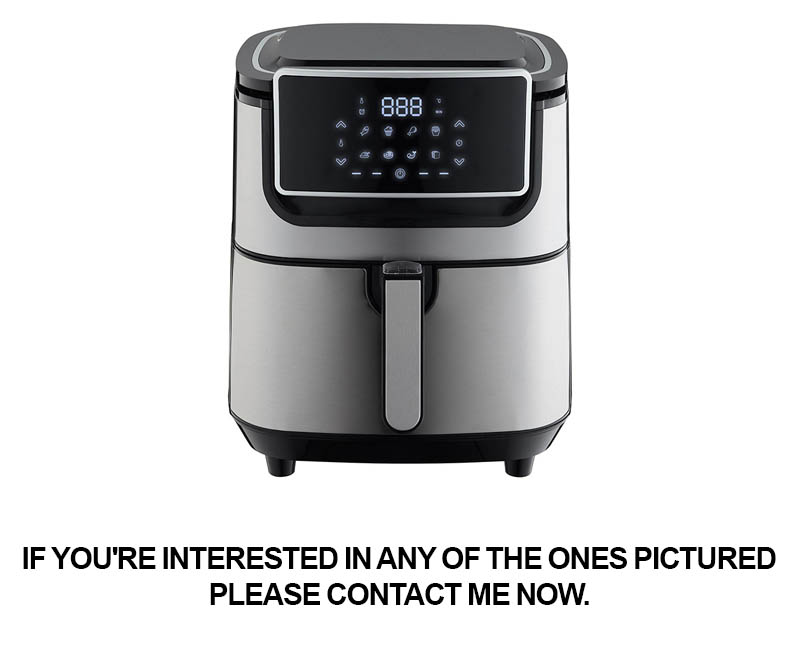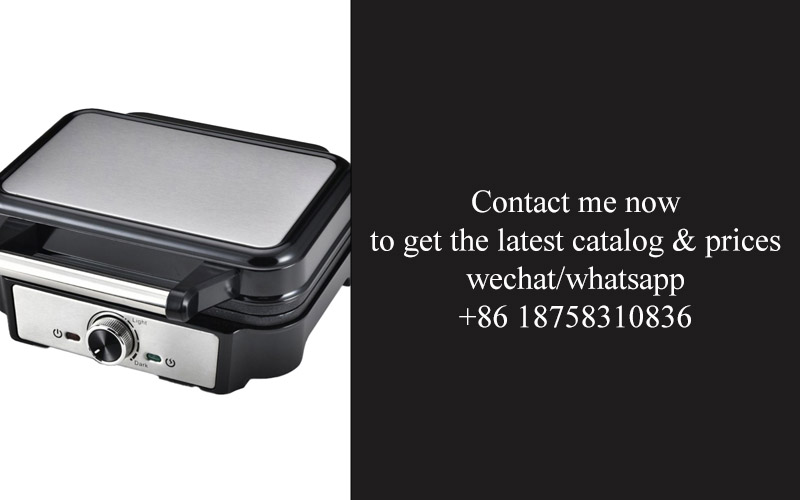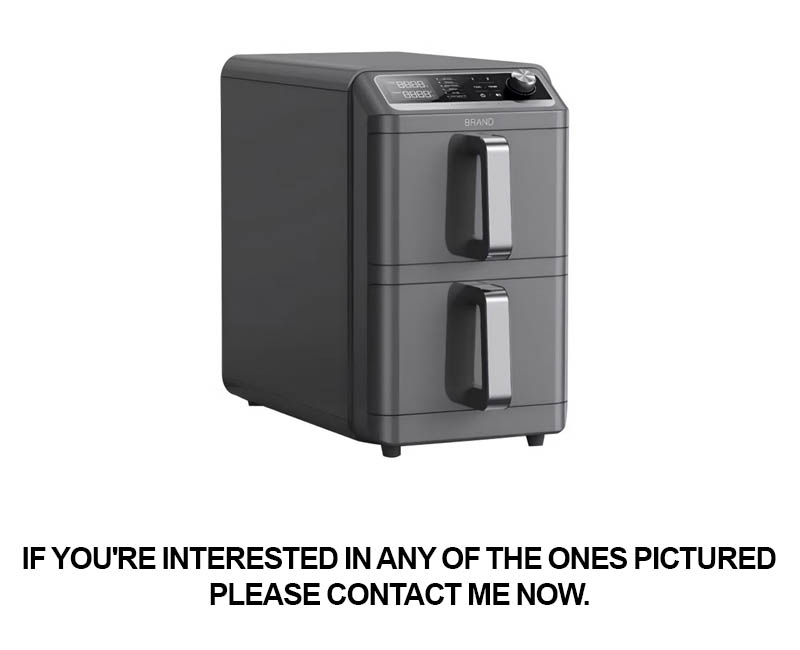Address
304 North Cardinal
St. Dorchester Center, MA 02124
Work Hours
Monday to Friday: 7AM - 7PM
Weekend: 10AM - 5PM
Address
304 North Cardinal
St. Dorchester Center, MA 02124
Work Hours
Monday to Friday: 7AM - 7PM
Weekend: 10AM - 5PM

In a world where foodservice is a cornerstone of our daily lives, the sandwich press has emerged as a vital tool for creating quick, delicious, and uniform sandwiches. As the commercial kitchen landscape evolves, so too does the technology behind these compact machines. Today, we delve into the innovative features and advancements that are reshaping the commercial sandwich press industry, from compact designs to energy-efficient operations. Join us as we explore the cutting-edge world of sandwich presses and the impact they have on the efficiency and quality of busy kitchens worldwide.
The commercial sandwich press has seen a remarkable surge in popularity, transforming the way quick-service restaurants (QSRs) and cafes operate. This surge can be attributed to several key factors that have converged to make the sandwich press a staple in modern commercial kitchens.
Gone are the days when sandwiches were simply a side dish or a casual meal. Today, they have become a cornerstone of fast-food culture, with a wide variety of options catering to diverse tastes and preferences. This shift has fueled the demand for efficient and reliable sandwich-making equipment, with the commercial sandwich press leading the charge.
The convenience of these presses is undeniable. They allow for consistent and uniform sandwich preparation, ensuring that every customer receives a high-quality product every time. The ability to toast the bread, melt the cheese, and seal in the flavors all at once has made the commercial sandwich press an indispensable tool for QSRs looking to streamline their operations.
One of the primary reasons for the rise of commercial sandwich presses is the increasing focus on speed and efficiency in the food service industry. With the fast-paced nature of modern dining, customers expect their meals to be served quickly without compromising on quality. The sandwich press can churn out sandwiches at a rapid pace, keeping lines moving and satisfying hungry patrons.
Moreover, the versatility of these presses has expanded beyond the traditional ham and cheese. Innovative chefs have begun to experiment with different types of bread, fillings, and toppings, pushing the boundaries of what a sandwich can be. This creativity has not only increased the variety available to consumers but has also highlighted the need for a reliable press that can handle a wide range of ingredients.
Another factor contributing to the popularity of commercial sandwich presses is the emphasis on health and wellness. As more people seek out healthier food options, sandwiches have emerged as a flexible and customizable choice. The press allows for the easy integration of fresh vegetables, lean proteins, and whole-grain breads, making it a perfect fit for the growing demand for balanced and nutritious meals.
The technology behind commercial sandwich presses has also evolved significantly. Modern models are equipped with features like adjustable heat settings, non-stick surfaces, and easy-to-clean designs, making them user-friendly and low-maintenance. These advancements have not only improved the cooking experience but have also reduced the risk of burns and spills, enhancing the safety of the kitchen staff.
Additionally, the commercial sandwich press has become a symbol of quality and consistency. In an industry where customer satisfaction is paramount, having a product that delivers the same great taste and texture every time is invaluable. The reputation of NSF-approved commercial sandwich presses has been built on this promise, with many operators choosing these presses to maintain their brand standards.
The market for commercial sandwich presses has also been bolstered by the rise of food trucks and pop-up restaurants. These mobile businesses require portable and durable equipment that can be easily transported and set up in various locations. The compact size and robust construction of sandwich presses make them an ideal choice for these dynamic operations.
Lastly, the integration of these presses into various culinary concepts has been a game-changer. From gourmet sandwich shops to casual diners, the commercial sandwich press has found its way into diverse menus, showcasing its adaptability and ability to elevate the sandwich experience.
In conclusion, the rise of commercial sandwich presses is a testament to the evolving food landscape. As the demand for fast, healthy, and high-quality sandwiches continues to grow, these versatile appliances are at the forefront, revolutionizing the way we think about this beloved meal.

NSF approved commercial sandwich presses have emerged as a game-changer in the culinary industry, commanding attention for several distinctive qualities. Their rise is attributed to a combination of cutting-edge technology, rigorous safety standards, and unparalleled performance. Here’s what sets these sandwich presses apart:
Excellence in Construction: The cornerstone of any NSF approved sandwich press lies in its robust construction. Made from high-quality materials, these presses are built to withstand the demands of commercial kitchens, ensuring durability and longevity.
Consistent Heat Distribution: One of the key features that differentiate NSF approved sandwich presses is their precise heat distribution. This uniform heating ensures that every sandwich is cooked to perfection, with a golden-brown crust and a warm, melt-in-your-mouth interior.
Hygiene and Safety: In commercial kitchens, hygiene is paramount. NSF approved sandwich presses are designed with sanitation in mind, featuring non-stick surfaces that are easy to clean and maintain. Additionally, they often come with safety features like automatic shut-off, preventing overheating and potential burns.
Innovative Design: The design of these sandwich presses is not just about aesthetics; it’s about functionality. Modern presses may include features like adjustable pressure settings, allowing chefs to customize the cooking process to various types of bread and fillings.
Energy Efficiency: In an era where sustainability is a top priority, NSF approved sandwich presses are designed to be energy-efficient. They use less electricity while still delivering the high performance needed to keep a busy kitchen running smoothly.
Versatility: These presses are not just for making sandwiches; they can be used for a variety of applications, including grilling cheese, sealing wraps, and even creating croutons. Their versatility makes them a valuable addition to any commercial kitchen.
Certified by the NSF: The NSF certification itself is a testament to the high standards these sandwich presses uphold. The NSF (National Sanitation Foundation) is a globally recognized organization that ensures products meet specific health and safety criteria, providing peace of mind to both operators and consumers.
User-Friendly Interface: Despite their advanced features, NSF approved sandwich presses are designed to be user-friendly. Intuitive controls and clear instructions make it easy for kitchen staff to operate them efficiently, reducing the learning curve.
Enhanced Cooking Experience: The consistent cooking performance of these presses not only ensures food quality but also enhances the overall cooking experience. Chefs can rely on these presses to deliver the same level of excellence every time, which is crucial in maintaining customer satisfaction.
Cost-Effective: While high-quality commercial appliances can be an investment, NSF approved sandwich presses offer a great return on investment. Their longevity and energy efficiency can lead to significant cost savings over time, making them a smart choice for businesses.
Market Trust and Credibility: The NSF certification also plays a crucial role in building trust with consumers. Restaurants and cafes that use NSF approved sandwich presses can confidently market their products as safe and high-quality, which can be a major selling point.
Customer Satisfaction: Ultimately, what makes NSF approved sandwich presses stand out is the positive impact they have on customer satisfaction. By providing consistently great-tasting sandwiches and other items, these presses help businesses create a memorable dining experience that keeps customers coming back.

The commercial sandwich press industry has seen a surge in innovation, transforming the way we think about sandwich preparation. These advancements not only enhance the cooking experience but also elevate the quality of the final product. Here’s a closer look at the design and functionality innovations that have become hallmarks of modern sandwich presses.
Precision Sealing TechnologyModern sandwich presses incorporate advanced sealing mechanisms that ensure even heat distribution across the bread, locking in flavors and juices for a perfectly toasted sandwich. These technologies often include adjustable spring tension, allowing chefs to control the pressure applied during cooking for consistent results.
Smart Temperature ControlWith the ability to precisely regulate the temperature, NSF approved sandwich presses offer a level of control that was once only found in high-end commercial kitchens. This means that operators can choose the ideal temperature for different types of bread and fillings, whether it’s a classic toasted ham and cheese or a gourmet avocado toast.
Multi-FunctionalityInnovative designs now often feature multi-functional capabilities, allowing the same press to cook a variety of foods, from sandwiches to paninis and even quesadillas. This versatility saves space and time in busy commercial kitchens, as operators can rely on one machine for a range of applications.
Rapid Heat-Up TimesEfficiency is key in a commercial setting, and newer models of sandwich presses boast rapid heat-up times, reducing downtime and keeping the line moving smoothly. These presses can reach optimal cooking temperatures in a matter of minutes, ensuring that every customer gets their sandwich quickly without compromise.
Non-Stick SurfacesThe non-stick surfaces on modern sandwich presses are not just for convenience; they are essential for maintaining hygiene and reducing the risk of food waste. Chefs can easily release sandwiches from the press, minimizing the need for additional tools and decreasing the likelihood of burns.
Integrated Cleaning SystemsMany modern sandwich presses are designed with cleaning in mind. Some models come with self-cleaning functions that use steam to sanitize the press, while others feature removable parts for easy cleaning and maintenance. This not only keeps the press in top condition but also minimizes the labor required to maintain it.
Ergonomic Handles and Safety FeaturesUser comfort and safety are paramount in commercial kitchen equipment. Innovations in the design of sandwich presses include ergonomic handles that reduce strain and improve grip. Additionally, safety features such as cool-touch exteriors and automatic shut-off systems protect operators from accidental burns and power outages.
Customizable SettingsThe ability to customize settings for various types of bread and fillings is a game-changer for sandwich shops and cafes. These presses often have adjustable settings for temperature, time, and pressure, allowing chefs to create the perfect sandwich every time, tailored to their specific menu items.
Energy EfficiencyIn an era where sustainability is a critical concern, energy-efficient sandwich presses have become more popular. These models consume less power, which not only helps reduce operational costs but also contributes to a greener kitchen environment.
Modular ComponentsSome sandwich presses are designed with modular components, making it easy to replace or upgrade parts as technology advances. This longevity and adaptability mean that businesses can invest in a press that will stand the test of time and remain relevant even as the industry evolves.
The evolution of design and functionality in commercial sandwich presses reflects the industry’s commitment to innovation. From precision sealing and smart temperature control to multi-functionality and energy efficiency, these innovations are changing the landscape of sandwich preparation, making it faster, safer, and more enjoyable for both chefs and customers.

In the bustling world of commercial kitchens, the importance of quality and safety in appliances cannot be overstated. The reliability of these tools directly impacts the efficiency, health, and satisfaction of both staff and customers. Here’s how these two factors shape the landscape of commercial kitchen appliances:
Precision and Consistency: High-quality appliances are engineered to deliver precise and consistent results. Whether it’s a commercial oven, refrigerator, or blender, these machines are designed to operate at peak performance, ensuring that every dish served is uniform in quality. This level of precision is crucial in maintaining a brand’s image and customer expectations.
Longevity and Durability: Investing in quality means investing in the longevity of your kitchen equipment. Commercial kitchens face rigorous use, and appliances must withstand constant operation without failing. Durable construction, robust materials, and well-thought-out design elements ensure that appliances last longer, reducing the frequency of replacements and the associated costs.
Energy Efficiency: Safety and quality also extend to energy consumption. Modern commercial appliances are increasingly energy-efficient, which not only helps reduce utility bills but also contributes to a greener and more sustainable operation. Energy-saving features, such as programmable settings and advanced insulation, are integral to the design of these appliances.
Health and Safety Regulations: The food industry is heavily regulated to ensure consumer safety. Quality appliances are built to comply with these regulations, providing a safe working environment for kitchen staff. Features like automatic shut-offs, temperature controls, and non-toxic materials are essential in preventing accidents and maintaining a hygienic kitchen.
User-Friendly Design: Safety and quality are not just about the appliance’s function but also about how easily it can be used. A well-designed appliance minimizes the risk of operator error, reducing the likelihood of accidents. Ergonomic controls, intuitive interfaces, and clear maintenance instructions are all part of a quality appliance that prioritizes safety.
Maintenance and Service: Quality appliances are often backed by comprehensive warranties and service agreements. This means that in the event of a malfunction, you can rely on the manufacturer to provide prompt and effective repairs. Regular maintenance is also easier with high-quality appliances, as they are designed to be service-friendly.
Enhanced Customer Experience: When the kitchen operates smoothly with reliable equipment, it reflects positively on the overall dining experience. Customers are more likely to return if they find the food consistently delicious and served in a timely manner. Quality appliances contribute to the seamless flow of service, which is essential for any successful commercial kitchen.
Brand Reputation: The reputation of a restaurant or catering service is heavily influenced by the quality of its kitchen equipment. A commitment to using top-notch appliances demonstrates a dedication to excellence, which can help differentiate a business from its competitors. Consistent quality and safety are key components of a strong brand identity.
Adaptability to Technological Advancements: The food industry is always evolving, and the best appliances are designed to adapt to new technologies. Whether it’s incorporating smart features or being able to integrate with other systems, quality appliances are future-proof, ensuring that a commercial kitchen remains up-to-date with the latest innovations.
Cost Savings Over Time: While high-quality appliances may have a higher upfront cost, they often result in significant savings over their lifespan. By reducing downtime, minimizing repair costs, and consuming less energy, these appliances can be a cost-effective investment for any commercial kitchen.
In conclusion, the importance of quality and safety in commercial kitchen appliances cannot be overstated. They are the backbone of a well-run kitchen, ensuring efficiency, health, and satisfaction for all involved. From precision and durability to energy efficiency and compliance with health and safety standards, these factors collectively contribute to the success of a commercial kitchen operation.

In the bustling world of commercial kitchen appliances, the trust of consumers is a delicate balance. NSF Certification emerges as a beacon of reliability, a cornerstone of consumer trust that can significantly differentiate one product from another. This certification is not just a label; it’s a promise, a guarantee that the appliance meets stringent standards of quality, safety, and performance.
The assurance that an appliance carries the NSF mark means it has been rigorously tested and certified by an independent, non-profit organization. This process involves thorough evaluations of manufacturing processes, material safety, and the overall functionality of the appliance. Here’s how NSF Certification plays a pivotal role in fostering consumer trust:
Independent Verification: Consumers place a high value on unbiased assessments. NSF Certification is awarded after an independent third-party audit, which ensures that the appliance has been evaluated without any bias from the manufacturer. This impartiality is crucial for building trust, as it validates that the appliance’s claims are indeed true.
Compliance with Safety Standards: The certification process demands that appliances meet or exceed established safety standards. This includes electrical safety, material safety, and structural integrity. For commercial kitchen appliances, where safety is paramount due to the potential for high-risk environments, NSF Certification becomes a crucial factor in consumer confidence.
Quality Assurance: NSF Certification involves a comprehensive review of the appliance’s design, manufacturing, and quality control processes. This means that the appliance is not only safe but also of high quality, which is essential for longevity and reliability. Knowing that an appliance has been certified for quality can reassure customers that they are purchasing a product that will stand the test of time.
Health and Wellness: In the food service industry, where health and wellness are at the forefront of consumer concerns, NSF Certification is a powerful indicator of an appliance’s ability to maintain cleanliness and safety. For example, commercial sandwich presses must adhere to strict guidelines to prevent cross-contamination and ensure food safety, which is a significant concern for consumers.
Global Recognition: The NSF mark is globally recognized, which means that it carries weight across different markets and industries. This recognition is particularly important for commercial kitchen appliances that are used internationally, as it ensures that the appliance meets the same standards of quality and safety regardless of location.
Consumer Education: NSF Certification also serves as an educational tool for consumers. The certification mark itself acts as a symbol of quality and safety, helping customers make informed decisions. It’s a quick reference that allows consumers to understand the level of scrutiny an appliance has undergone before reaching the market.
Continuous Improvement: The certification process is not a one-time event. Appliances that carry the NSF mark are subject to regular audits to ensure ongoing compliance with the latest safety and quality standards. This commitment to continuous improvement reinforces consumer trust, as it shows a manufacturer’s dedication to maintaining high standards.
Legal and Regulatory Compliance: In many regions, NSF Certification can also be a legal requirement for certain types of appliances. By choosing an NSF-certified appliance, businesses and consumers can be confident that they are adhering to local regulations and industry guidelines.
Reduced Liability: For businesses, the NSF Certification can significantly reduce liability risks. By ensuring that their appliances meet the highest safety and quality standards, companies can mitigate the risk of accidents or recalls, which can be costly and damaging to their reputation.
Market Differentiation: Finally, the NSF Certification mark can be a powerful tool for differentiation in a crowded market. It’s a way for manufacturers to stand out and appeal to consumers who are looking for the best products available, providing them with a clear and recognizable signal of quality and safety.
In essence, NSF Certification is a trust-building mechanism that enhances the credibility of commercial kitchen appliances. It’s a testament to the appliance’s ability to perform as advertised, a promise of safety, and a reflection of the manufacturer’s commitment to excellence. For consumers, this certification is a reassuring sign that they are making a wise investment in a product that will serve them well in their professional kitchens.

In the bustling world of commercial kitchens, an NSF approved sandwich press is more than just a piece of equipment; it’s a symbol of reliability and quality. When selecting one for your establishment, there are several key features that can make a significant difference in both performance and customer satisfaction.
A sleek, user-friendly interface can greatly enhance the operation of a sandwich press. Look for models with intuitive controls that allow for easy adjustments to pressure, temperature, and cooking time. This not only simplifies the process for staff but also ensures consistency in the final product.
The heating elements are the heart of any sandwich press. Quality appliances often feature advanced heating technology that distributes heat evenly across the entire surface. This ensures that every sandwich is cooked to perfection, with a golden-brown crust and a melt-in-your-mouth interior.
Durability is crucial in a commercial setting where equipment is subjected to heavy use. An NSF approved sandwich press should be constructed from high-grade materials that can withstand constant heat and pressure. Stainless steel is a popular choice for its strength and resistance to corrosion, ensuring a long lifespan.
Safety features are non-negotiable. A press with an automatic shut-off function, for instance, can prevent overheating and potential fires. Additionally, a cool-touch exterior is essential to prevent burns and ensure the safety of your staff and customers.
Ease of cleaning is a practical consideration. Consider a sandwich press with a non-stick cooking surface that reduces the need for excessive cleaning and extends the life of the appliance. Some models also offer removable parts, making it easier to clean and sanitize.
The size and capacity of the sandwich press are important for efficiency. A larger unit can handle a higher volume of orders, but it must also fit comfortably in your kitchen space. Look for models that offer a balance between size and capacity to maximize your workspace.
A built-in timer can be a game-changer in a busy kitchen. It allows for precise control over cooking times, ensuring that sandwiches are ready on time without overcooking. This feature is especially valuable for managing peak hours when orders can pile up quickly.
Some sandwich presses come with adjustable plates, which can accommodate different types of bread and fillings. This versatility allows for a wider menu selection, from classic deli sandwiches to gourmet creations, without the need for multiple presses.
Energy efficiency is an often-overlooked feature but can save your business money in the long run. Look for models that have energy-saving settings or are designed to minimize heat loss, reducing your utility bills.
Lastly, consider the brand reputation and warranty. A sandwich press from a reputable manufacturer is more likely to be reliable and come with a comprehensive warranty that covers parts and labor. This can provide peace of mind and save you from unexpected repair costs.
In summary, an NSF approved commercial sandwich press with these top features can elevate your kitchen operations, improve customer satisfaction, and contribute to the overall success of your business. From user-friendly controls to safety features and efficiency, each aspect plays a crucial role in the selection process.

In the fast-paced world of commercial kitchens, every second counts. The introduction of efficient appliances is a game-changer, and NSF-approved commercial sandwich presses are no exception. These machines are designed not just to produce high-quality sandwiches but to streamline operations and boost productivity. Here’s how these presses enhance efficiency in busy kitchens:
Consistent Pressing PressureThe uniform pressure applied by an NSF-approved sandwich press ensures that every sandwich is cooked to perfection. This consistency not only improves the quality of the product but also reduces the time spent on adjusting the press for each batch, thereby speeding up the sandwich-making process.
Quick Heat-Up and Recovery TimesCommercial kitchens are often under immense pressure to serve quickly. These sandwich presses are engineered to reach optimal temperature rapidly, allowing for a seamless workflow. Once the press is heated, it can quickly recover to the desired temperature, minimizing downtime and maximizing output.
Large Capacity for High VolumeBusy kitchens require appliances that can handle high volumes. NSF-approved sandwich presses often come with larger plates and can accommodate multiple sandwiches at once. This not only reduces the number of presses needed but also cuts down on the time spent loading and unloading the machine.
Easy to Clean and MaintainSanitation is paramount in commercial kitchens, and these presses are designed with cleanliness in mind. The non-stick surfaces and easy-to-remove components make cleaning a breeze, ensuring that the press can be used immediately after a shift, without the need for extensive downtime.
User-Friendly ControlsWith intuitive controls, operators can quickly adjust settings to their specific requirements. Digital displays and simple-to-use dials allow for precise temperature and time management, eliminating guesswork and reducing the likelihood of undercooked or overcooked sandwiches.
Reduced Staff Training NeedsThe simplicity of operation in NSF-approved sandwich presses means that staff can be trained more quickly and efficiently. This is particularly beneficial in kitchens where turnover is high, as it ensures that new staff members can contribute to the workflow without significant delays.
Increased Capacity for Side DishesWhile the primary function of a sandwich press is to make sandwiches, many models are designed to also accommodate side dishes or toppings. This dual-purpose feature helps to maintain a steady flow of orders by reducing the need for additional equipment or cooking stations.
Improved Energy EfficiencyEnergy-efficient sandwich presses not only save on utility bills but also contribute to a greener kitchen environment. By optimizing heat distribution and minimizing energy waste, these presses help commercial kitchens to operate more sustainably.
Enhanced Product PresentationThe uniform appearance of sandwiches made with a commercial sandwich press can boost the visual appeal of the kitchen’s offerings. Aesthetically pleasing food can be a powerful draw for customers, and these presses help to maintain a high standard of presentation.
Extended Equipment LifeWith durable materials and robust construction, NSF-approved sandwich presses are built to last. This longevity means that kitchens can rely on these appliances for years without the need for frequent replacements, further contributing to overall efficiency.
By integrating these features, NSF-approved commercial sandwich presses play a pivotal role in enhancing efficiency in busy kitchens. From consistent pressing to easy maintenance, these appliances are designed to support the demands of high-volume foodservice operations, ensuring that quality and speed are never compromised.

In the fast-paced world of commercial kitchens, the demand for high-quality sandwich making equipment has surged. From bustling cafes to busy restaurants, the quest for efficiency and consistency is paramount. Let’s delve into the factors driving this market demand and why top-notch sandwich making equipment is a must-have for any kitchen.
The Growing Trend of Quick ServiceThe demand for quick-service restaurants (QSRs) has skyrocketed, with consumers seeking fast and convenient meals. As a result, sandwich shops and delis are in high demand, and the need for reliable sandwich making equipment is at an all-time high. High-quality equipment ensures that these establishments can churn out sandwiches quickly without compromising on quality.
Customization and VarietyToday’s consumers are not just looking for a quick meal; they want variety and the option to customize their sandwiches. High-quality sandwich making equipment allows for easy adjustments and the ability to accommodate different ingredients, bread types, and toppings. This flexibility is crucial for meeting the diverse preferences of today’s diners.
Consistency in QualityIn the foodservice industry, consistency is key. High-quality sandwich making equipment is designed to deliver consistent results every time, ensuring that every sandwich served meets the same high standards. This level of quality control is essential for maintaining customer satisfaction and loyalty.
Space and Energy EfficiencyCommercial kitchens are often cramped for space, and energy costs can be a significant concern. High-quality sandwich making equipment is designed with space and energy efficiency in mind. Compact designs and energy-saving features help kitchens maximize their limited space and reduce operational costs.
Durability and LongevityInvesting in high-quality sandwich making equipment is a long-term decision. These appliances are built to withstand the rigors of a busy kitchen environment, with durable materials and robust construction. By choosing equipment that can last, businesses save on frequent replacements and maintenance costs.
Hygiene and Food SafetyFood safety is a top priority in the foodservice industry. High-quality sandwich making equipment is designed with hygiene in mind, featuring easy-to-clean surfaces and components that prevent cross-contamination. This not only ensures the safety of customers but also helps businesses comply with health codes and regulations.
Technological AdvancementsModern sandwich making equipment often comes with technological advancements that simplify the cooking process. Features like programmable settings, automated temperature control, and digital displays make it easier for kitchen staff to operate the equipment, reducing the learning curve and improving efficiency.
Brand Reputation and SupportThe reputation of the brand and the level of customer support offered are also important factors in the market demand for high-quality sandwich making equipment. Established brands with a track record of producing reliable and innovative products are more likely to be preferred by businesses. Additionally, excellent customer service and technical support can make a significant difference in the success of a kitchen’s equipment investment.
Customer ExpectationsAs consumer expectations evolve, so does the demand for high-quality sandwich making equipment. Today’s customers expect fresh, delicious sandwiches made with quality ingredients. To meet these expectations, restaurants and cafes must invest in the best equipment available.
Competitive AdvantageHaving high-quality sandwich making equipment can give a business a competitive edge. By offering a superior product that stands out in terms of taste, presentation, and consistency, businesses can attract more customers and build a loyal following.
In conclusion, the market demand for high-quality sandwich making equipment is driven by the need for speed, customization, consistency, efficiency, and safety. As the foodservice industry continues to evolve, the importance of investing in top-notch equipment will only grow, ensuring that kitchens can keep up with the demands of modern diners.

In a bustling café in downtown Chicago, the introduction of an NSF-approved sandwich press transformed the morning rush into a seamless symphony of freshly toasted sandwiches. The kitchen, once a maze of chaos, now operates with precision and speed. The press, with its durable build and consistent heat distribution, has become the heart of the café’s operation. This is just one example of how these specialized appliances are not just tools but game-changers in the commercial kitchen scene.
The press’s ability to maintain a consistent temperature ensures that every sandwich is toasted to perfection, every time. This level of consistency is crucial in maintaining the brand’s image and customer satisfaction. At a fast-food chain in Los Angeles, the implementation of a high-quality sandwich press has led to a noticeable reduction in customer complaints regarding sandwich quality. The uniformity in the cooking process has minimized waste and improved the overall customer experience.
In a high-end restaurant in New York City, the culinary team was facing challenges with their traditional sandwich press, which often failed to deliver the desired outcome. The switch to an NSF-approved model not only improved the taste and appearance of their sandwiches but also increased the kitchen staff’s confidence in their ability to produce top-notch products. The press’s features, such as adjustable pressure and a non-stick surface, have become integral to the restaurant’s commitment to excellence.
A small sandwich shop in Dallas, Texas, saw its sales soar after investing in an NSF-certified sandwich press. The press’s ability to cook a variety of sandwiches, from classic ham and cheese to gourmet avocado and bacon, has expanded the shop’s menu and attracted a wider customer base. The increased efficiency and ease of use have allowed the shop to handle peak hours without compromising on quality.
At a sports stadium in San Francisco, the need for quick and consistent food service is paramount. The stadium’s food service team turned to an NSF-approved sandwich press to streamline their operations during large events. The press’s fast heating time and easy-to-clean design have significantly reduced downtime and improved the speed of service, ensuring that fans can enjoy their sandwiches quickly and efficiently.
In a college campus cafeteria in Boston, the introduction of an NSF-certified sandwich press has become a staple in the dining experience. The press’s versatility has allowed the cafeteria to offer a variety of sandwiches, catering to diverse dietary preferences. The consistent results have made the cafeteria a favorite spot for students looking for a quick and satisfying meal.
In each of these case studies, the NSF-approved sandwich presses have proven to be more than just appliances; they are the backbone of successful operations. They have enhanced the quality of food, increased productivity, and ultimately, improved customer satisfaction. The stories of these successful implementations serve as a testament to the importance of investing in high-quality, reliable equipment in the commercial kitchen industry.

The commercial sandwich press industry is on the brink of exciting developments, with a growing emphasis on efficiency, sustainability, and technological advancements. As we look ahead, several trends and innovations are shaping the future of this sector.
Technological Integration: One of the most significant trends in the commercial sandwich press industry is the integration of smart technology. From touchscreens that offer customizable settings to Bluetooth connectivity that allows for remote monitoring and control, these presses are becoming more than just appliances—they’re part of a larger kitchen ecosystem.
Sustainability Focus: With environmental concerns at the forefront, there’s a shift towards more sustainable practices in the commercial kitchen equipment market. Eco-friendly materials, energy-efficient designs, and longer-lasting components are becoming standard features in new sandwich presses. This not only appeals to environmentally conscious businesses but also helps reduce operational costs over time.
Health and Hygiene: The health and hygiene of customers are paramount in the food service industry. New innovations in sandwich presses include features that facilitate easy cleaning and maintain high standards of cleanliness. Non-stick surfaces, removable parts for thorough sanitization, and automated cleaning cycles are becoming common to ensure that every sandwich is safe and delicious.
Customization Options: Customers and operators alike are looking for more options when it comes to their sandwich preferences. Presses that offer adjustable heat settings, various browning levels, and even the ability to press different types of bread (from artisan to gluten-free) are becoming increasingly popular. This allows for a wider variety of menu items and keeps customers coming back for more.
Ease of Use: User-friendly designs are becoming a hallmark of the commercial sandwich press industry. Modern presses come with intuitive interfaces and features that simplify the operation, even for staff members who may not be as tech-savvy. Features like automatic shut-off to prevent overheating and easy-to-fill reservoirs for oil or butter contribute to a more seamless cooking experience.
Portability and Compact Design: As kitchens become more crowded and space at a premium, portable and compact sandwich presses are gaining traction. These units are designed to be moved around easily and can be placed on countertops or in corners without taking up valuable floor space. This trend is particularly beneficial for food trucks, cafes with limited space, and any establishment looking to maximize their operational area.
Energy Efficiency: With the rising cost of energy, businesses are seeking out sandwich presses that are not only efficient but also cost-effective. Energy-saving modes, LED lighting, and efficient heating elements are just a few ways that manufacturers are addressing this demand. These features not only reduce the carbon footprint but also lead to significant savings on utility bills.
Interactive Menus: Some of the latest innovations in sandwich presses include interactive menus that allow operators to create custom recipes and save them for future use. This can streamline the production process and ensure consistency across multiple locations, especially for chains that need to maintain a uniform brand experience.
Modular Components: To enhance the longevity and versatility of sandwich presses, manufacturers are focusing on modular designs. Components like heating plates, press arms, and even the housing can be easily replaced or upgraded, ensuring that the press remains a reliable tool for years to come.
These trends and innovations are reshaping the commercial sandwich press industry, offering operators more choices and capabilities than ever before. As the industry continues to evolve, it’s clear that the future of sandwich making is set to be both innovative and sustainable.